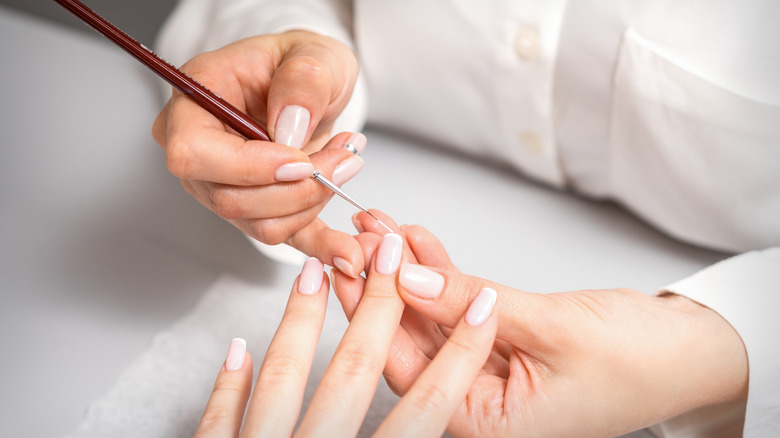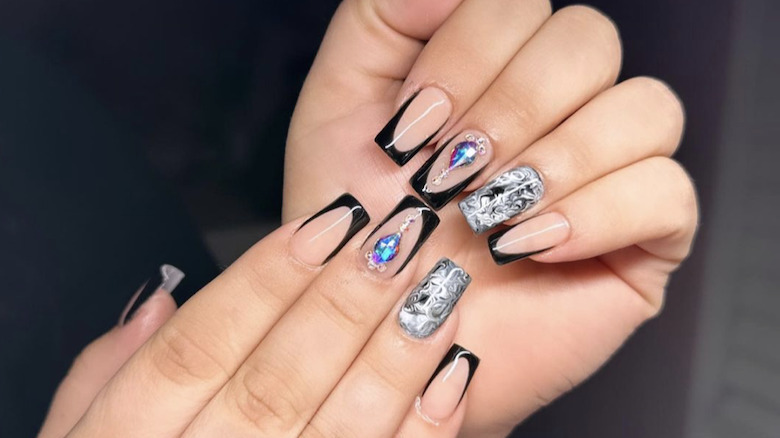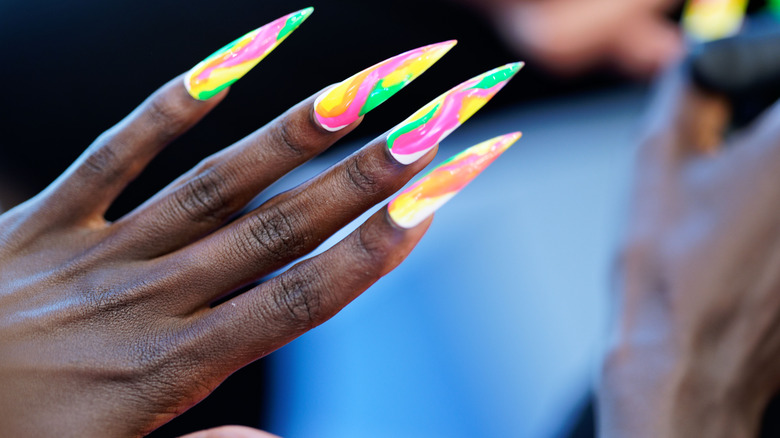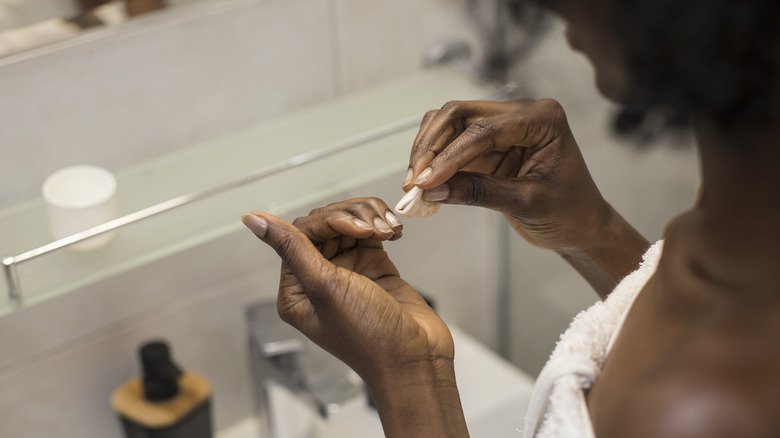How Are Gel-X Manicures Different Than Acrylics?
With so many options for how to do your nails, it's easy to get overwhelmed. From regular polish to dip powder nails, the evolving beauty technology has made it easier to find your perfect fit. However, with so many similar options on the market, it's essential to know what differentiates these nail types. Researching the various manicures available will help you decide the best option for your nail health.
Two popular manicure options are acrylic and Gel-X nails. Both styles are ideal if you want statement nails with various designs. Before deciding on either manicure option, though, you need to know their differences. Acrylic and Gel-X nails can carry various costs depending on the design and the salon. Blue World Dreams explains that the average price of acrylic nails can be around $35, while gel nails tend to cost closer to $50. Gel-X nails are often around $80 and up for an initial set. This cost is not accounting for the tip you would leave your nail technician.
Although both Gel-X and acrylics are great options for your manicures, their differences might make you reach for one over the other.
What are Gel-X manicures?
If you're a gel user (as an increasing number of Glam readers are!), a Gel-X manicure is a proper solution to your problems. According to Makeup.com, Aprés Gel-X extensions are a hybrid between a soft gel manicure and hard press-on nails. They give you the durability of gel polish and the length of press-ons without leaving your nails brittle when you remove them. Gel-X extensions are applied like a regular gel manicure and offer a soak-off treatment that can last anywhere from two to three weeks. Unlike regular gel polish, you don't need to refill your polish and can get an entirely new set at your next appointment.
Pleji Salon adds that Gel-X manicures can cover your entire nail and seamlessly blend in with your natural nail. By opting for a Gel-X manicure, you can avoid having a lifted nail tip that can easily get caught on things as you go about your day. This seamless transition between fake and natural nails makes Gel-X popular among those who want more length without the associated hassles. Like other manicure options, Gel-X comes in various nail shapes and sizes, meaning you can customize it to the look you wish to achieve.
What are acrylic manicures?
Acrylic manicures have existed for decades as a way to make the nails look longer and stronger. If you've never experimented with the tried-and-tested style, the process is simple: A powder and liquid polymer are mixed to create a thick paste, which is then applied on your natural nail or base layer. After the material hardens, the nails are shaped, filed, and topped off with the polish and nail art of your choice.
Acrylics require a bit of upkeep but are an otherwise long-lasting and durable option. "Acrylics should last six to eight weeks with a fill needed about every two to three weeks, depending on your nail growth," Hannah Lee, a Sally Hansen nail expert and professional manicurist, explained to Harper's Bazaar. Lee added that getting a fill to touch up any new nail growth is essential because it protects the manicure and prevents lifting. Once you're ready for a fresh set, it's best to head to a nail technician to safely remove your old acrylics. Otherwise, you may damage your real nails underneath, per L'Oréal Paris.
Do acrylic or Gel-X nails last longer?
If you're looking for a manicure that will last, acrylics should be your go-to choice over Gel-X nails. Because of their multiple layers, acrylics can last several weeks. Additionally, if your daily activities tend to cause wear and tear on your nails, you'll want to opt for acrylics to avoid any chipping.
With that said, the lifespan of each manicure type can vary depending on your habits and how well you care for your sets. Some people who get Gel-X nails can make them last for a full month before experiencing any chipping or damage, according to nail artist Elizabeth Ridley. "Usually, after [four weeks], you can experience lifting," she told Allure. "I find that some who work with steam or water, like baristas and hairstylists, can't go as long as someone who works in an office environment because excessive exposure to elements like steam and water can cause the extension to lift from the natural nail sooner."
Another point to consider: how complicated the removal process is. While Gel-X nails often don't last as long as acrylic nails, they can be conveniently removed at home with a soak in acetone nail polish remover, unlike acrylics, which often require another trip to the salon.
Which is better for your nails?
Compared to the Gel-X method, acrylics are known to cause significant nail problems (and, in some cases, allergic reactions). As the American Academy of Dermatology Association points out, the process of applying acrylic nails typically requires buffing your natural nails first, which may make them thinner and weaker. Gel-X nails also require some buffing, as nail artist and Après research and development manager Eunice Park shared with Allure, though they don't require the same nail-destroying hard drilling.
Moreover, removing acrylic nails can be harsh on the skin and nails. Gel-X offers a gentler alternative that doesn't require much work to remove. "All of the gel products are made of soft gel, so Gel-X sets can be easily soaked off," celebrity nail artist Britney Tokyo revealed to PopSugar. "And for a nail artist, Gel-X saves us a lot of time — all the hard work of extensions is already done for me." For acrylic nails, the removal process involves nail filing in addition to acetone, a combination that can be brutal for your natural nails.
While Gel-X seems like the obvious winner for nail health, remember to still treat your manicure with care to avoid any accidental damage. "So far, I haven't seen any damage from Gel-X nails, but gel is gel," celebrity manicurist Mar y Sol Inzerillo told Refinery29. "If you pick off your extensions you could cause damage to your natural nails."




